|
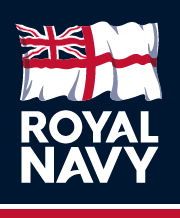
D-DAY
6TH JUNE 1944
ATLANTIS
STORY
MAP &
OPERATION HOMEPAGE
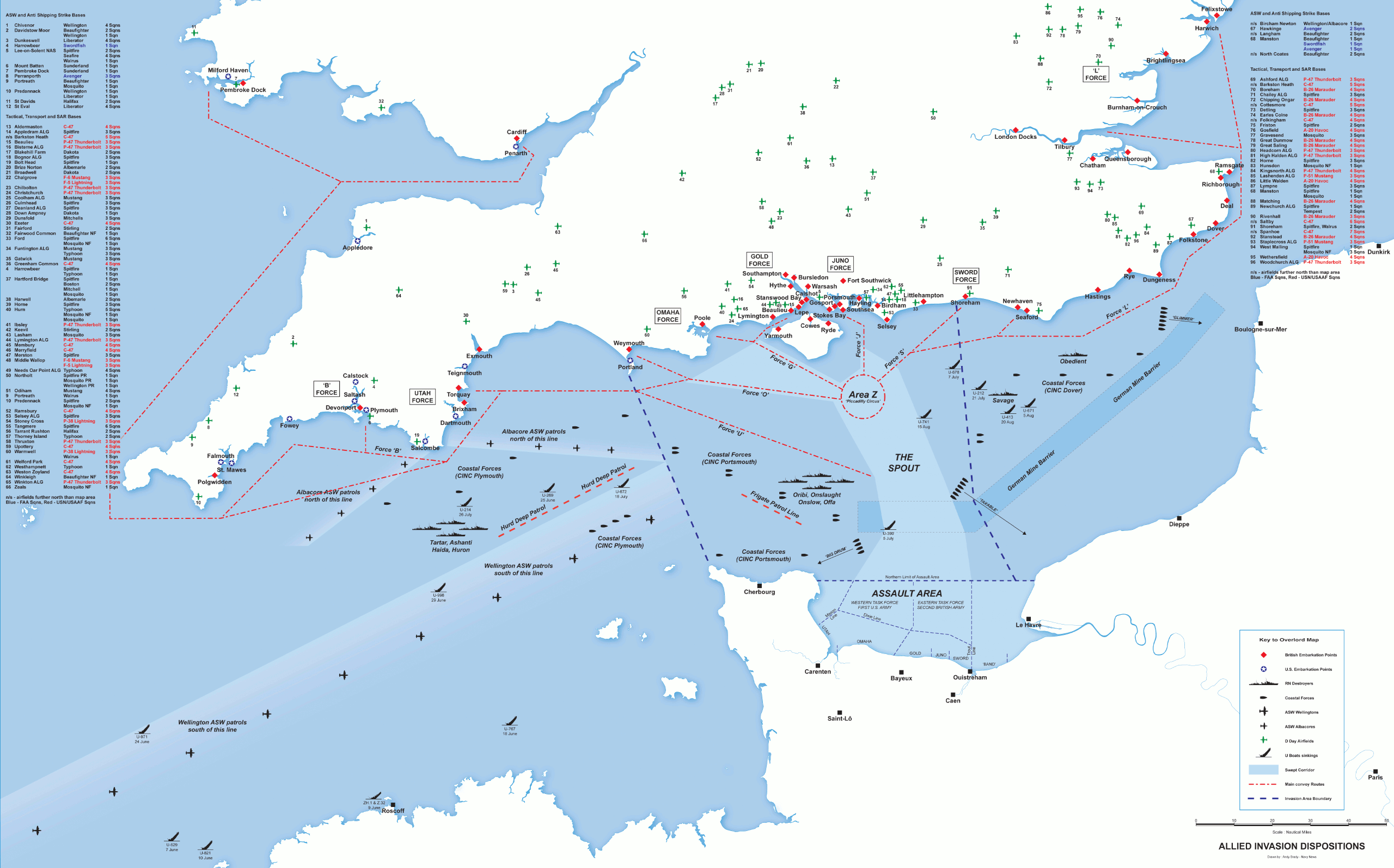
Operation
Overlord and Operation Neptune were the code names for the D-Day Normandy landings,
a gigantic allied forces action in World War II,
to re-establish troops, after Dunkirk in June of 1940:
Operation Dynamo.
The Dunkirk evacuation, codenamed Operation Dynamo and also known as the Miracle of Dunkirk, or just Dunkirk, was the evacuation of more than 338,000 Allied soldiers during the Second World War from the beaches and harbour of Dunkirk, in the north of France, between 26 May and 4 June 1940. The operation commenced after large numbers of Belgian, British, and French troops were cut off and surrounded by German troops during the six-week Battle of France. In a speech to the
House of
Commons, British Prime Minister Winston Churchill called this "a colossal military disaster", saying "the whole root and core and brain of the British Army" had been stranded at Dunkirk and seemed about to perish or be captured. In his "We shall fight on the beaches" speech on 4 June, he hailed their rescue as a "miracle of deliverance".
In
this fictional, John Storm adventure, Neptune is also the name
of a (fictional) nuclear powered Astute
class submarine, captured by a group of environmental
extremists called Terramentals.
The Normandy landings were the landing operations and associated airborne operations on Tuesday, 6 June 1944 of the Allied invasion of Normandy in Operation Overlord during
World War
II. Codenamed Operation Neptune and often referred to as D-Day, it was the largest seaborne invasion in history. The operation began the liberation of France (and later Western Europe) and laid the foundations of the Allied victory on the Western Front.
Planning for the operation began in 1943. In the months leading up to the invasion, the Allies conducted a substantial military deception, codenamed Operation Bodyguard, to mislead the Germans as to the date and location of the main Allied landings. The weather on D-Day was far from ideal, and the operation had to be delayed 24 hours; a further postponement would have meant a delay of at least two weeks, as the invasion planners had requirements for the phase of the moon, the tides, and the time of day that meant only a few days each month were deemed suitable. Adolf Hitler placed Field Marshal Erwin Rommel in command of German forces and of developing fortifications along the Atlantic Wall in anticipation of an Allied invasion. U.S. President Franklin D. Roosevelt placed Major General Dwight D. Eisenhower in command of Allied forces.
The amphibious landings were preceded by extensive aerial and naval bombardment and an airborne assault—the landing of 24,000 American, British, and Canadian airborne troops shortly after midnight. Allied infantry and armoured divisions began landing on the coast of France at 06:30. The target 50-mile (80 km) stretch of the Normandy coast was divided into five sectors: Utah, Omaha, Gold, Juno, and Sword. Strong winds blew the landing craft east of their intended positions, particularly at Utah and Omaha. The men landed under heavy fire from gun emplacements overlooking the beaches, and the shore was mined and covered with obstacles such as wooden stakes, metal tripods, and barbed wire, making the work of the beach-clearing teams difficult and dangerous. Casualties were heaviest at Omaha, with its high cliffs. At Gold, Juno, and Sword, several fortified towns were cleared in house-to-house fighting, and two major gun emplacements at Gold were disabled using specialised tanks.
The Allies failed to achieve any of their goals on the first day. Carentan, Saint-Lô, and Bayeux remained in German hands, and Caen, a major objective, was not captured until 21 July. Only two of the beaches (Juno and Gold) were linked on the first day, and all five beachheads were not connected until 12 June; however, the operation gained a foothold that the Allies gradually expanded over the coming months. German casualties on D-Day have been estimated at 4,000 to 9,000 men. Allied casualties were documented for at least 10,000, with 4,414 confirmed dead. Museums, memorials, and war cemeteries in the area now host many visitors each year.
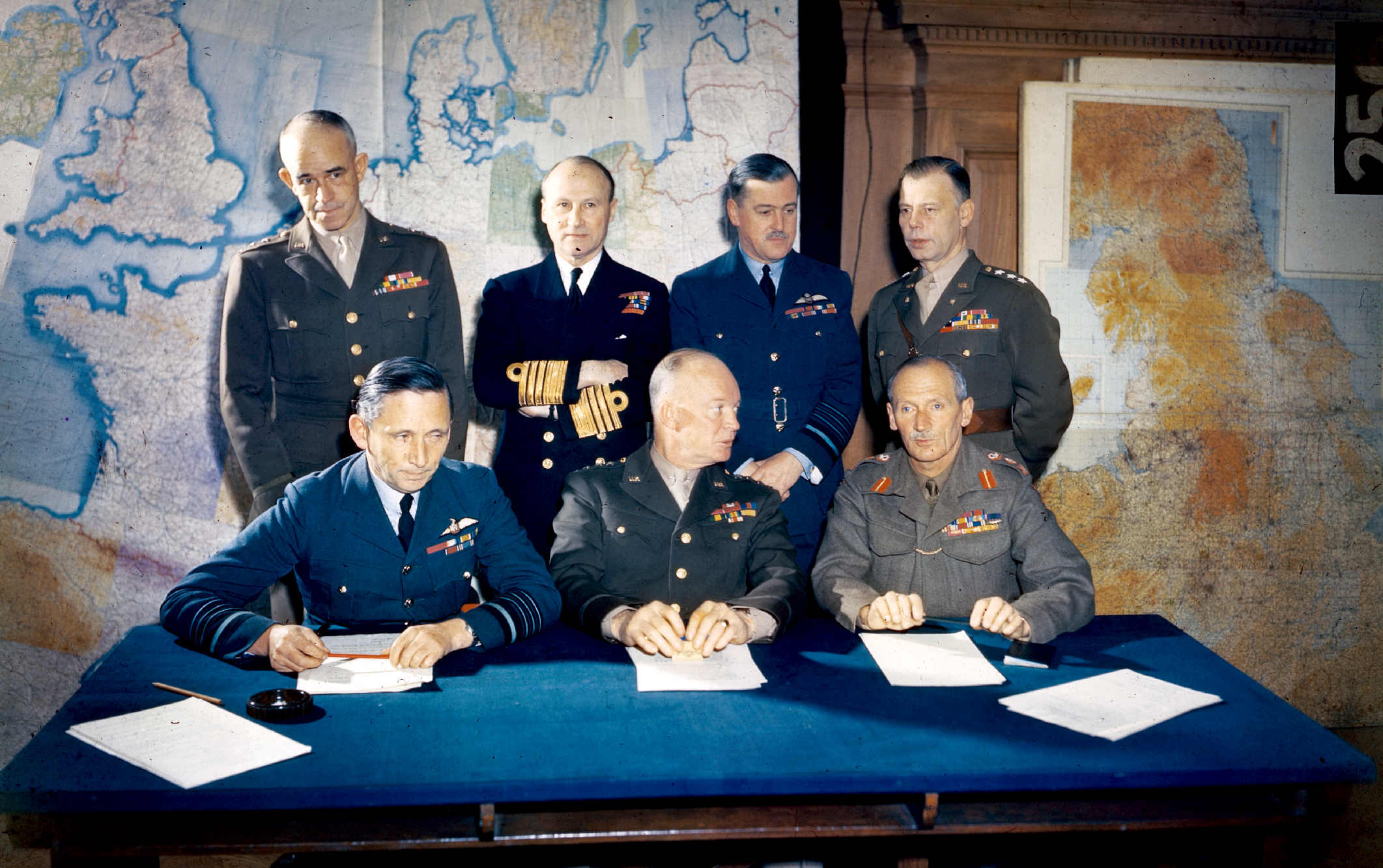
PICTURE - Meeting of the Supreme Headquarters Allied Expeditionary Force (SHAEF), 1 February 1944. Front row: Air Chief Marshal Sir Arthur Tedder; General Dwight D. Eisenhower; General Sir Bernard Montgomery. Back row: Lieutenant General Omar Bradley; Admiral Sir Bertram Ramsay; Air Chief Marshal Sir Trafford Leigh-Mallory; Lieutenant General Walter Bedell Smith.
OVERWHELMING NUMBERS
There has been no greater combined air, sea and land operation in the history of warfare than Operation Overlord – codename for the invasion of Normandy.
Over 175,000 men were assigned for the first day’s assault on Hitler’s vaunted Fortress Europe – an intermittent series of bunkers, fortifications, trenches, gun emplacements and strongpoints stretching from Jutland to Biarritz – first from the air (by parachute and glider) but mostly from the sea.
1,213 WARSHIPS
The seaborne element of the invasion – Operation Neptune – required 6,833 vessels from great battleships pounding German defences, down to small floating galleys, salvage tugs and landing craft.
The naval force was crewed by Frenchmen, Norwegians, Dutch, Poles, Greeks, Americans, but especially Britons and Canadians, who accounted for nearly 80 per cent of all the sailors taking part.
The Royal Marines bore a tremendous burden too. Of the hundreds of landing craft sent against the beaches of Normandy, two out of every three were crewed by marines.
11,590 AIRCRAFT
Overhead was a gigantic umbrella of Allied air power – 11,590 aircraft, 443 of them from the Fleet Air Arm – flying some 14,000 sorties in the first 24 hours of the invasion. They dominated the skies that Tuesday. The Luftwaffe flew just 319 missions… and failed to shoot down a single Allied plane.
The German Navy was also largely held at bay: it could only muster a couple of dozen fast motor launches and 17
U-boats to counter the armada massed against it.
The counter-attack sank not a single Royal Navy warship on June 6. Torpedo boats did hit the Norwegian destroyer Svenner, which went down with 33 men, including one Briton.
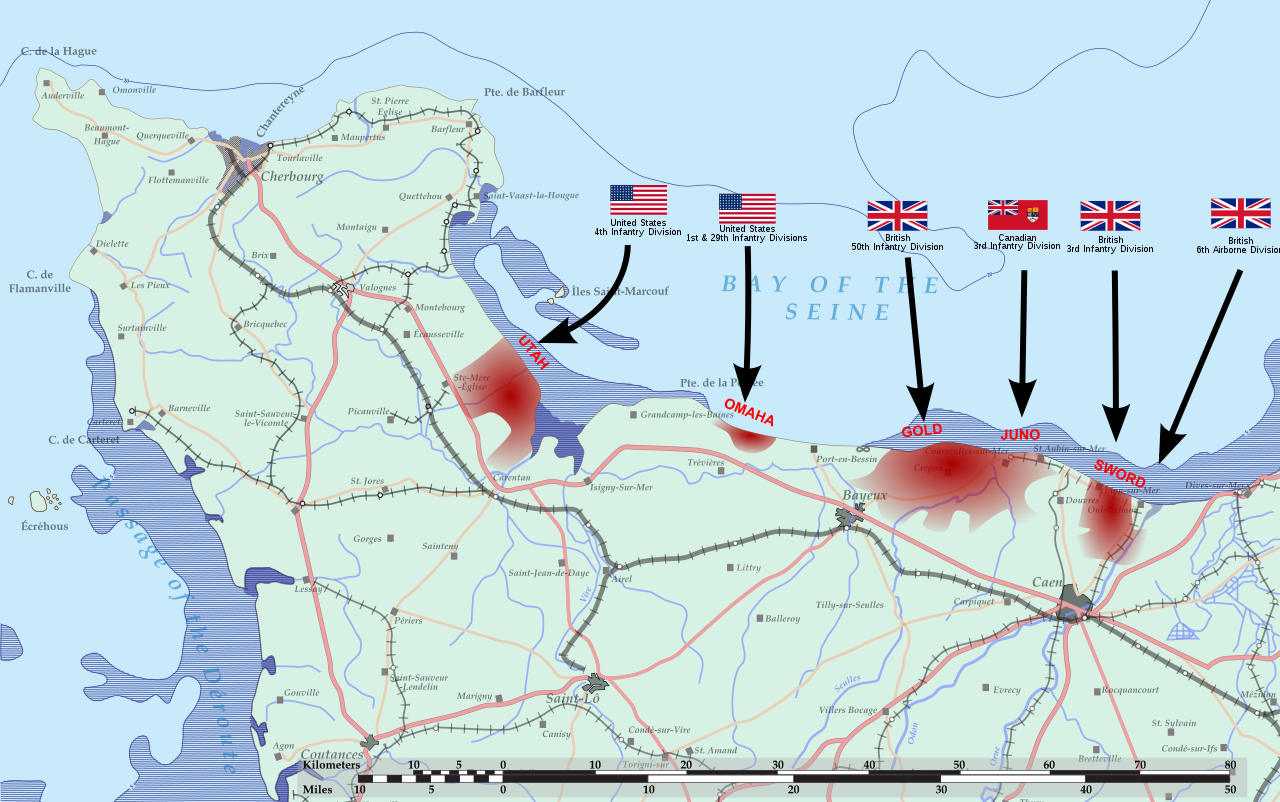
Map
of the beaches and who took them - first day advances.
DOUBTS ABOUT SUCCESS
Despite the overwhelming forces massed for the invasion, many of its chief architects were not convinced the operation would succeed.
As the fleet sailed for France, Admiral Bertram Ramsay, the operation’s senior naval planner, wrote that “success will be in the balance”. And Dwight D Eisenhower, the American largely in charge of Overlord, issued a stirring order of the day promising “nothing less than full victory” from the landings. Privately, however, he scribbled a second communique to be issued should the venture fail.
“The troops, the air [forces] and the Navy did all that bravery and devotion could do. If any blame attaches to the attempt, it is mine alone.”
THE ALLIED COUNTER ATTACK
From naval bombardments and immense air attacks, to daring parachute and glider landings, the allied invasion of Normandy required a giant air, sea and land force to conduct and support the
amphibious landings.
12:26am, June 6th 1944
Crossings over the River Orne and Caen Canal seized The first action of D-Day was silent, lethal and legendary. In just ten minutes, airborne troops capture vital crossings over the
River Orne and neighbouring Caen Canal between Caen and Ouistreham after landing in Horsa gliders. Seizing the bridges prevents German armour from reaching the beaches without a lengthy detour through Caen. The success of the operation results in the canal crossing earning the name ‘Pegasus Bridge’ after the airborne troops’ flying horse emblem.
4:30am, June 6th 1944
Paratroopers fill the skies Throughout the night, paratroopers are dropped by the British – to the east and northeast of Caen, and by the Americans – at the foot of the Cotentin Peninsula. By 4.30am, the first town on French soil had been liberated, St Mère Église. News of the landings quickly reaches German headquarters. They demand the paratroopers are wiped out and request permission from Hitler’s headquarters - 1,000 miles away in East Prussia - to commit the armoured reserve and crush any landing. The German dictator is asleep and must not be woken. The panzers stay put.
5:00am, June 6th 1944
Germans sight the approaching armada in the Seine Bay Artillery
battery commander Major Werner Pluskat, along with his men, is stationed at his command post in Ste Honorine, overlooking the Normandy coast just east of Colleville. For four hours, Werner Pluskat peered through the darkness and saw nothing. But as night slowly turned to day, Pluskat grabbed his binoculars again and scanned the Seine Bay. ‘I saw that the horizon was literally filling with ships of all kinds. I could hardly believe it’. Stunned, the artillery officer passed the binoculars to a colleague in the concrete command post. ‘Take a look’ Pluskat told him. He did. ‘My god, it’s the invasion’. Another German observer tersely reported: Tausende von Schiffen aufgespürt. Sie kommen! Thousands of ships detected. They’re coming!
5:30am, June 6th 1944
Allied warships begin bombarding German defences The Americans fired broadsides – all guns at once. The British preferred to ‘ripple’ their guns, one turret firing at a target after another. “What I saw scared the devil out of me,” said 19-year-old Robert Vogt, near Arromanches. “Ships as far as the eye could see. An entire fleet. I thought: ‘Oh God, we’re finished! We’re done for now!’” Veteran battleship HMS Warspite was the first ship to open fire, hammering German positions around
Gold Beach. Her captain, Marcel Harcourt Attwood Kelsey, encouraged those not directly involved in the bombardment to watch the spectacle: “All personnel not on full action stations can come up on deck to witness a sight you will never see again in your lifetime.” Allan Snowden, on battleship HMS Rodney, found “the sheer volume of noise, the blast of the guns was incredible – you could feel it through your body even if you were quite a distance from the gun actually doing the firing. You couldn’t help feeling a bit sorry for the guys on the receiving end.”
6:30am, June 6th 1944
American troops land at Utah Beach in the face of negligible opposition, but face ferocious defence landing at Omaha Beach The amphibious landings begin at the western end of the Seine Bay on both sides of River Vire estuary. On the left bank, the attackers encounter virtually no opposition from the German defenders at what is codenamed Utah Beach. To the east, beneath the bluffs at Vierville, the sands labelled Omaha Beach became a killing ground as Germans mowed down the attackers. After just four minutes, a report was flashed back from Omaha: Entire first wave foundered.
7:25am, June 6th 1944
British forces land at Gold and Sword Beaches Nearly an hour after US forces came ashore, the British followed suit further east at Gold Beach (Arromanches) and Sword (Lion-sur-Mer). Off Sword, 19-year-old telegraphist Clifford Palliser was urged by his superior on HMS Largs to “watch a piece of history in the making” as landing craft ferried men, including Royal Marines of 47 Commando, towards the shore “bobbing and weaving”. He saw amphibious tanks crawl up the beach before seemingly being knocked out “one after another” by German gunners. “It was a real surprise when, through a break in the smoke, I saw the tanks lumbering on up the beach.” At Gold, British tanks quickly overwhelmed the defences. Before 8.30am, they were racing towards the picture-postcard town of Arromanches.
7:35am, June 6th 1944
British and Canadian troops struggle at Juno Beach Juno Beach – between Sword and Gold and attacked by a combined Anglo-Canadian force – proved to be the Commonwealth troops’ Omaha; the 90-minute bombardment of German positions had failed to subdue the defenders. Some of the landing craft were impaled on the beach defences as they ran in, while Royal Marines of 48 Commando spilled ashore having been tossed around badly by the rough sea. Many threw up. “The beach was covered with casualties – some Canadian, some ours,” Royal Marines Capt Dan Flunder remembered. “The surf was incredible: beached and half-sunken craft wallowing about in it.” Tanks saved the day. An hour after the infantry landed, the first armour appeared and forced the sea wall holding the assault back.
10:00am, June 6th 1944
Hitler is informed of the invasion Adolf Hitler finally rises at his Bavarian mountain retreat, the Berghof, where he was finally told of the invasion. “The news couldn’t be better,” he told his most senior military commander. “Now we have them where we can destroy them.” Around the same time, Erwin Rommel, at home in southern Germany celebrating his wife’s 50th birthday, was informed by his bespectacled chief-of-staff Hans Speidel. The field marshal resolved to return to his headquarters 430 miles away immediately. He would not arrive at La Roche-Guyon, on the Seine 40 miles downstream of Paris, until nightfall.
11:00am, June 6th 1944
Americans finally break out at Omaha Beach After being pinned down at Omaha for three hours, American troops had finally managed to subdue the bunkers and fortifications and reach the bluffs overlooking the beach. By mid-day they were streaming inland. German machine-gunner Heinrich Severloh – history would dub him ‘the Beast of Omaha’ for shooting hundreds of American troops, perhaps 2,000 – abandoned his post to fall back. From his viewpoint high above Omaha, he surveyed the horrific scene: “For the first time I realised how many dead had been washed up on the beach below by the high waves and rising tide in our sector. On a stretch of beach about 300m long and several metres wide lay hundreds upon hundreds of lifeless bodies of American soldiers, in places several on top of each other. The wounded moved slowly in the blood-soaked
water; most of them crawled to the edge of the beach – where there was an embankment about one and half metres high – to find shelter behind it.” He would be a prisoner of the Allies within 24 hours.
2:30pm, June 6th 1944
Hitler orders his panzers to crush the invasion Erwin Rommel had wanted to concentrate his armour close to the beaches and unleash them as soon as the Allies set foot on French soil… but had been overruled by Hitler who feared the panzers would be smashed by the enemy bombardment. The armour could not roll without the dictator’s approval – but it was gone 2.30pm, after the lunchtime situation conference in Bavaria, that Hitler authorised the counter-attack. The Nazi leader was in an almost euphoric mood. “He has already almost won the battle,” propaganda minister
Joseph Goebbels gushed. “But we don’t want things to go too easily…”
7:00pm, June 6th 1944
The German counter-attack fails Despite throwing hundreds of panzers and thousands of men at the growing Allied beachheads, no German counter-attack got closer than four miles from the coast; the various armoured prongs were mauled by Allied air power and the guns of the fleet massed in the Seine Bay. The Germans had set off vowing: “We’ll show the Tommies.” By early evening the narrow Normandy lanes were peppered with burned-out and wrecked German armour. “All hell broke loose,” recalled Hans von Luck, commanding motorised infantry. “The heaviest naval guns, artillery and fighter-bombers plastered us without pause.” One regiment lost 70 of its 124 tanks in little more than six hours.
10:00pm, June 6th 1944
Night falls on Normandy By last light on Tuesday June 6 1944, Allied forces had a precarious foothold in occupied France. Nearly 175,000 troops were ashore. Gold and Juno beachheads had merged but there was still a gap with the troops landed at Sword, who had fallen short of capturing their (rather ambitious) objective for the day: Caen. The Americans at Utah and paratroopers had seized 25 square miles of the Cotentin peninsula, but those at Omaha had advanced little more than half a mile from the beach. The cost of the day’s fighting? Around 2,500 American dead, 2,600 British and Commonwealth fallen and pretty much every German defender of the beaches killed. News of the landings provoked a tremendous appetite for news around the world, but little joy except among the small number of French now liberated. “The invasion leaves us with mixed feelings – mostly with a sick feeling in the pit of our stomachs,” one grandmother from Hull observed. “The reaction of people on June 6 was mostly tears because so many of them had sons and husbands who would be risking their lives on the beaches of France.”
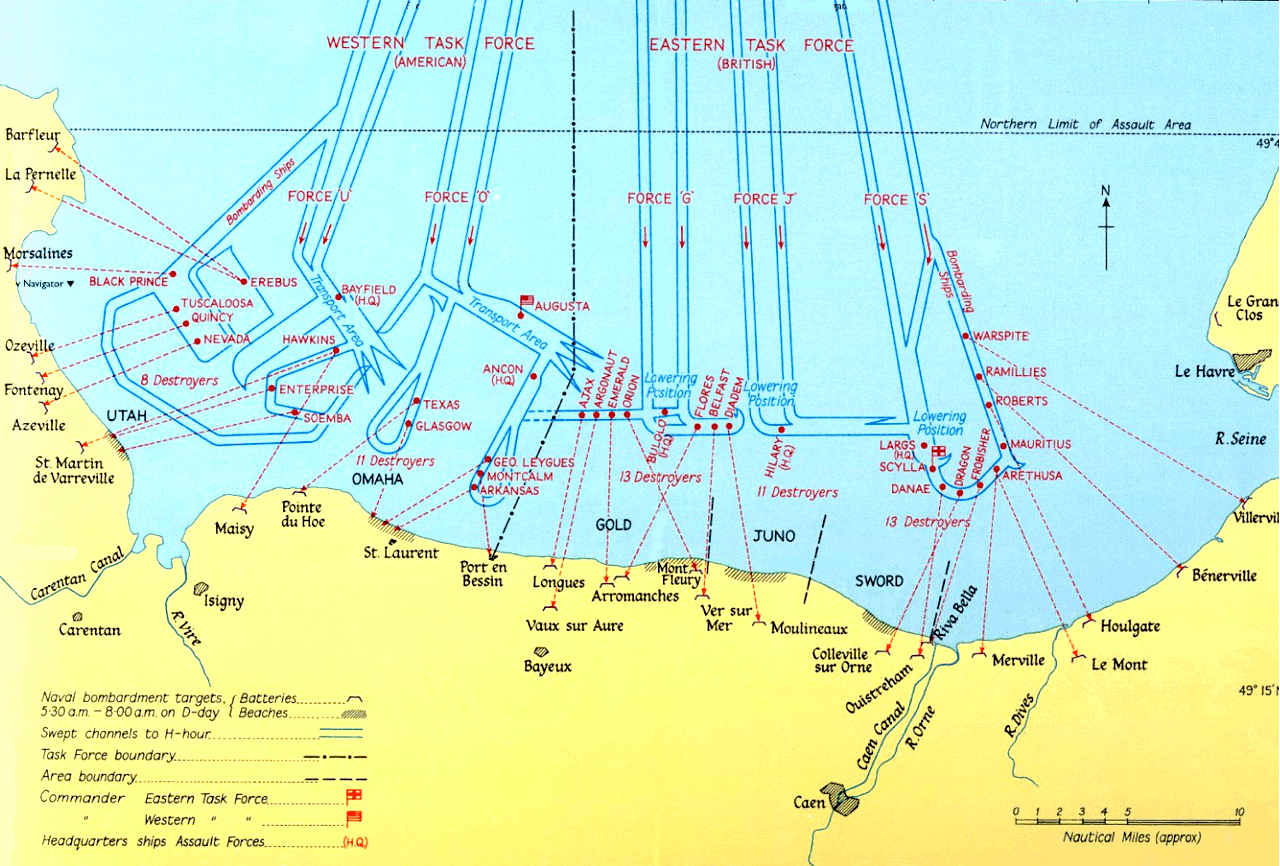
Map
showing naval bombardment targets during the 6th June Normandy
landings in 1944.
BACKGROUND AND PREPARATIONS
After the German Army invaded the Soviet Union in June 1941, the Soviet leader Joseph Stalin began pressing his new allies for the creation of a second front in western Europe. In late May 1942, the Soviet Union and the United States made a joint announcement that a "... full understanding was reached with regard to the urgent tasks of creating a second front in Europe in 1942." However, British Prime Minister Winston Churchill persuaded U.S. President Franklin D. Roosevelt to postpone the promised invasion as, even with U.S. help, the Allies did not have adequate forces for such an activity.
Instead of an immediate return to France, the western Allies staged offensives in the Mediterranean Theatre of Operations, where British troops were already stationed. By mid-1943, the campaign in North Africa had been won. The Allies then launched the invasion of Sicily in July 1943 and subsequently invaded the Italian mainland in September the same year. By then, Soviet forces were on the offensive and had won a major victory at the Battle of Stalingrad. The decision to undertake a cross-channel invasion within the next year was taken at the Trident Conference in Washington in May 1943. Initial planning was constrained by the number of available landing craft, most of which were already committed in the Mediterranean and
Pacific. At the Tehran Conference in November 1943, Roosevelt and Churchill promised Stalin that they would open the long-delayed second front in May 1944.
The Allies considered four sites for the landings: Brittany, the Cotentin Peninsula, Normandy, and the Pas-de-Calais. As Brittany and Cotentin are peninsulas, it would have been possible for the Germans to cut off the Allied advance at a relatively narrow isthmus, so these sites were rejected. With the Pas-de-Calais being the closest point in continental Europe to Britain, the Germans considered it to be the most likely initial landing zone, so it was the most heavily fortified region. But it offered few opportunities for expansion, as the area is bounded by numerous rivers and canals, whereas, landings on a broad front in Normandy would permit simultaneous threats against the port of Cherbourg, coastal ports further west in Brittany, and an overland attack towards Paris and eventually into Germany. Normandy was hence chosen as the landing site. The most serious drawback of the Normandy coast—the lack of port facilities—would be overcome through the development of artificial Mulberry harbours. A series of modified tanks, nicknamed Hobart's Funnies, dealt with specific requirements expected for the Normandy Campaign such as mine clearing, demolishing bunkers, and mobile bridging.
The Allies planned to launch the invasion on 1 May 1944. The initial draft of the plan was accepted at the Quebec Conference in August 1943. General Dwight D. Eisenhower was appointed commander of Supreme Headquarters Allied Expeditionary Force. General Bernard Montgomery was named commander of the 21st Army Group, which comprised all land forces involved in the invasion. On 31 December 1943, Eisenhower and Montgomery first saw the plan, which proposed amphibious landings by three divisions with two more divisions in support. The two generals insisted that the scale of the initial invasion be expanded to five divisions, with airborne descents by three additional divisions, to allow operations on a wider front and to hasten the capture of Cherbourg. The need to acquire or produce extra landing craft for the expanded operation meant that the invasion had to be delayed to June. Eventually, thirty-nine Allied divisions would be committed to the Battle of Normandy: twenty-two U.S., twelve British, three Canadian, one Polish, and one French, totalling over a million troops.
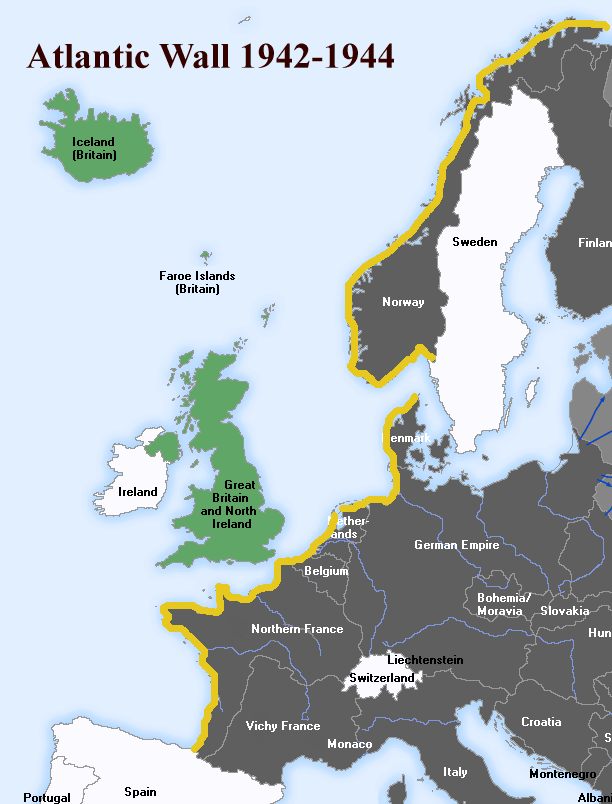
The
Atlantic Wall from 1942 - 1944
OPERATIONS
Operation Overlord was the name assigned to the establishment of a large-scale lodgement on the continent. The first phase, the amphibious invasion and establishment of a secure foothold, was codenamed Operation Neptune. To gain the air superiority needed to ensure a successful invasion, the Allies undertook a bombing campaign (codenamed Operation Pointblank) that targeted German aircraft production, fuel supplies, and airfields. Elaborate deceptions, codenamed Operation Bodyguard, were undertaken in the months leading up to the invasion to prevent the Germans from learning the timing and location of the invasion.
The landings were to be preceded by airborne operations near Caen on the eastern flank to secure the Orne River bridges and north of Carentan on the western flank. The Americans, assigned to land at Utah Beach and Omaha Beach, were to attempt to capture Carentan and Saint-Lô the first day, then cut off the Cotentin Peninsula and eventually capture the port facilities at Cherbourg. The British at Sword and Gold Beaches and Canadians at Juno Beach would protect the U.S. flank and attempt to establish airfields near Caen on the first day. (A sixth beach, code-named "Band", was considered to the east of the Orne.) A secure lodgement would be established with all invading forces linked together, with an attempt to hold all territory north of the Avranches-Falaise line within the first three weeks. Montgomery envisaged a ninety-day battle, lasting until all Allied forces reached the River Seine.
DECEPTION PLANS
Under the overall umbrella of Operation Bodyguard, the Allies conducted several subsidiary operations designed to mislead the Germans as to the date and location of the Allied landings. Operation Fortitude included Fortitude North, a misinformation campaign using fake radio traffic to lead the Germans into expecting an attack on Norway, and Fortitude South, a major deception involving the creation of a fictitious First United States Army Group under Lieutenant General George S. Patton, supposedly located in Kent and Sussex. Fortitude South was intended to deceive the Germans into believing that the main attack would take place at Calais. Genuine radio messages from 21st Army Group were first routed to Kent via landline and then broadcast, to give the Germans the impression that most of the Allied troops were stationed there. Patton was stationed in England until 6 July, thus continuing to deceive the Germans into believing a second attack would take place at Calais.
Many of the German radar stations on the French coast were destroyed in preparation for the landings. In addition, on the night before the invasion, a small group of Special Air Service operators deployed dummy paratroopers over Le Havre and Isigny. These dummies led the Germans to believe that an additional airborne landing had occurred. On that same night, in Operation Taxable, No. 617 Squadron RAF dropped strips of "window", metal foil that caused a radar return which was mistakenly interpreted by German radar operators as a naval convoy near Le Havre. The illusion was bolstered by a group of small vessels towing barrage balloons. A similar deception was undertaken near Boulogne-sur-Mer in the Pas de Calais area by No. 218 Squadron RAF in Operation Glimmer.
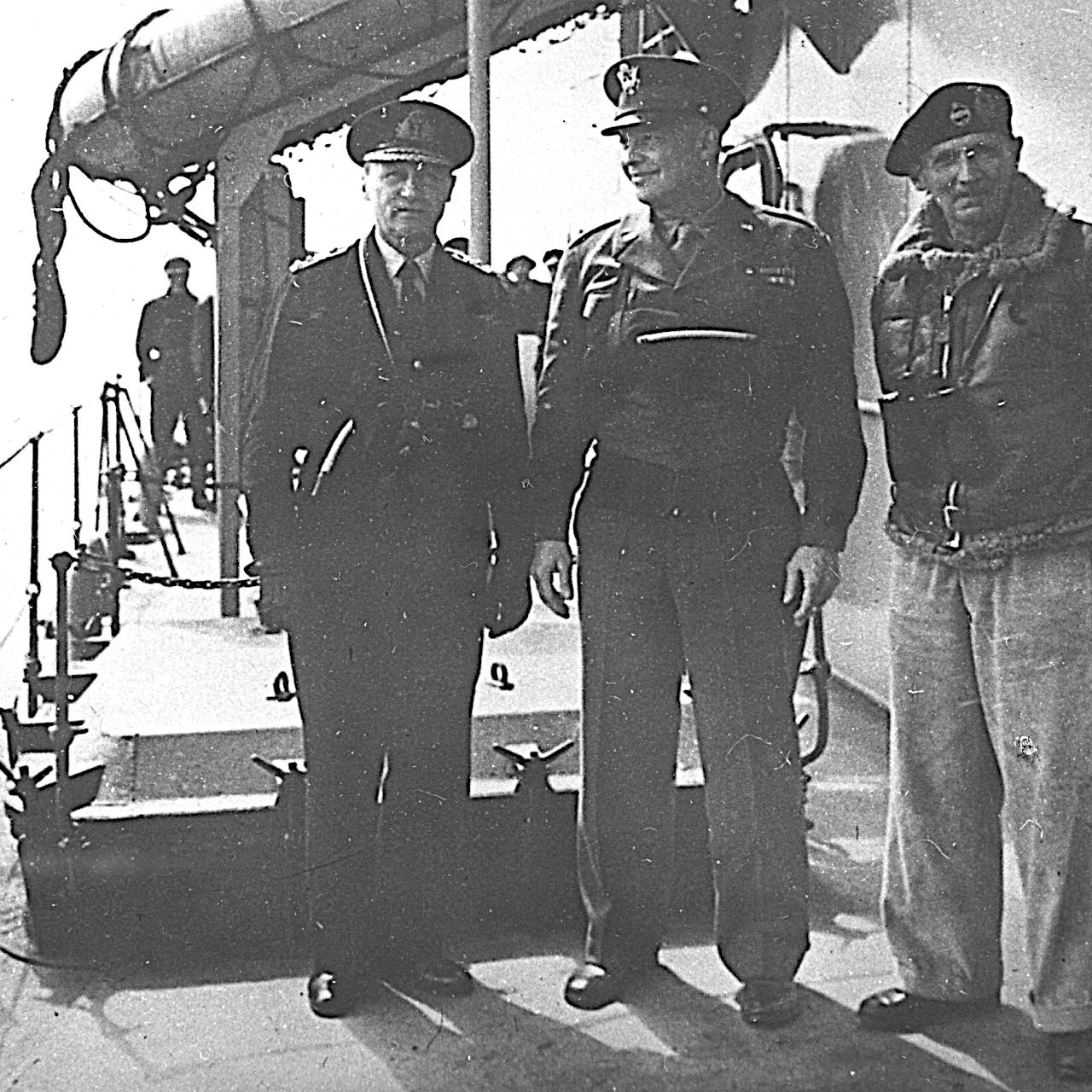
GENERALS:
Ramsey, Eisenhower and Montgomery - World War Two allied
supreme command.
THE WEATHER
The invasion planners determined a set of conditions involving the phase of the moon, the tides, and the time of day that would be satisfactory on only a few days in each month. A full moon was desirable, as it would provide illumination for aircraft pilots and have the highest tides. The Allies wanted to schedule the landings for shortly before dawn, midway between low and high tide, with the tide coming in. This would improve the visibility of obstacles on the beach while minimising the amount of time the men would be exposed in the open. Eisenhower had tentatively selected 5 June as the date for the assault. However, on 4 June, conditions were unsuitable for a landing: high winds and heavy seas made it impossible to launch landing craft, and low clouds would prevent aircraft from finding their targets.
Group Captain James Stagg of the Royal Air Force (RAF) met Eisenhower on the evening of 4 June. He and his meteorological team predicted that the weather would improve enough for the invasion to proceed on 6 June. The next available dates with the required tidal conditions (but without the desirable full moon) would be two weeks later, from 18 to 20 June. Postponement of the invasion would have required recalling men and ships already in position to cross the English Channel and would have increased the chance that the invasion plans would be
detected. After much discussion with the other senior commanders, Eisenhower decided that the invasion should go ahead on 6 June. A major storm battered the Normandy coast from 19 to 22 June, which would have made the beach landings impossible.
Allied control of the Atlantic meant German meteorologists had less information than the Allies on incoming weather patterns. As the Luftwaffe meteorological centre in Paris was predicting two weeks of stormy weather, many Wehrmacht commanders left their posts to attend war games in Rennes, and men in many units were given leave.
Field Marshal Erwin Rommel returned to Germany for his wife's birthday and to petition Hitler for additional Panzer divisions.
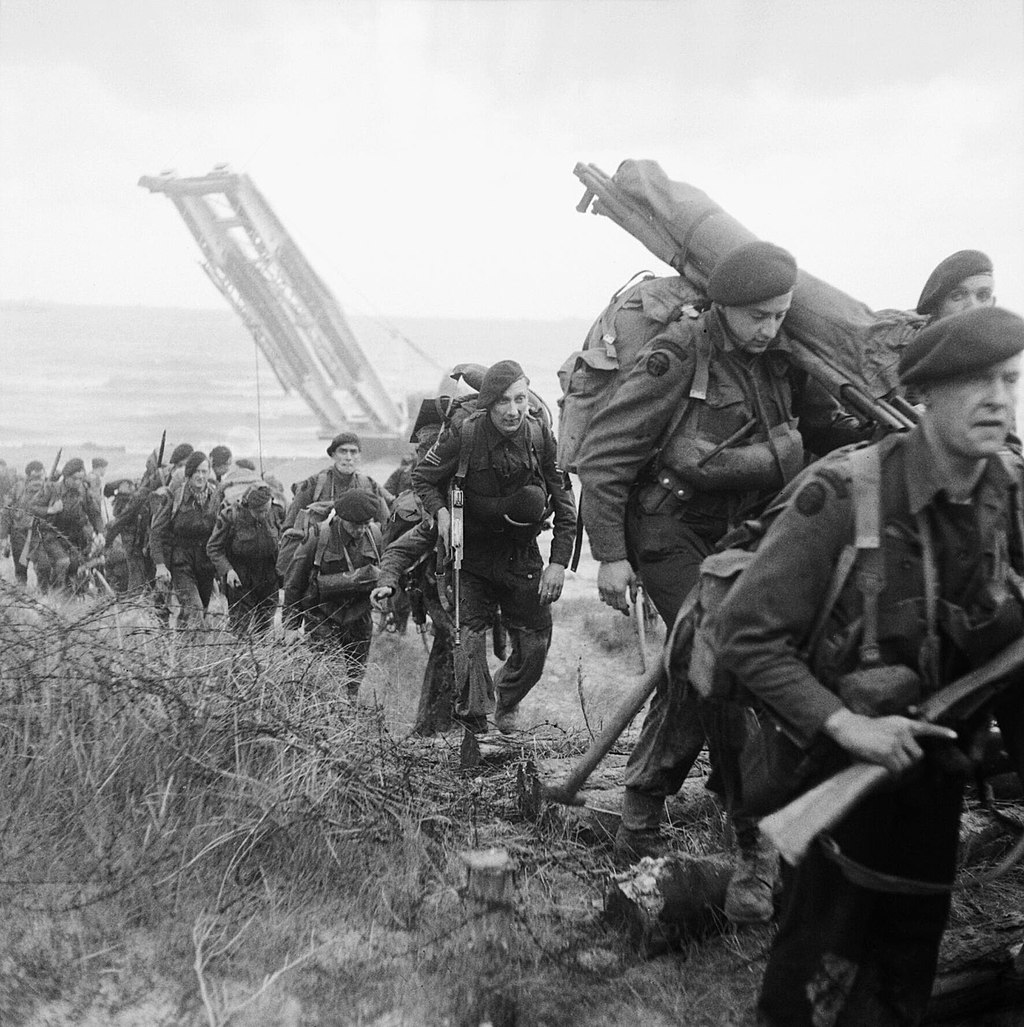
....
GERMAN ORDER OF BATTLE
Nazi Germany had at its disposal fifty divisions in France and the Low Countries, with another eighteen stationed in Denmark and Norway. Fifteen divisions were in the process of formation in Germany. Combat losses throughout the war, particularly on the Eastern Front, meant that the Germans no longer had a pool of able young men from which to draw. German soldiers were now on average six years older than their Allied counterparts. Many in the Normandy area were Ostlegionen (eastern legions)—conscripts and volunteers from Russia, Mongolia, and other areas of the Soviet Union. They were provided mainly with unreliable captured equipment and lacked motorised transport. Many German units were under strength.
In early 1944, the German Western Front (OB West) was significantly weakened by personnel and materiel transfers to the Eastern Front. During the Soviet Dnieper–Carpathian offensive (24 December 1943 – 17 April 1944), the German High Command was forced to transfer the entire II SS Panzer Corps from France, consisting of the 9th and 10th SS Panzer Divisions, as well as the 349th Infantry Division, 507th Heavy Panzer Battalion and the 311th and 322nd StuG Assault Gun Brigades. All told, the German forces stationed in France were deprived of 45,827 troops and 363 tanks, assault guns, and self-propelled anti-tank guns. It was the first major transfer of forces from France to the east since the creation of Führer Directive 51, which eased restrictions on troop transfers to the eastern front.
The 1st SS Panzer Division "Leibstandarte SS Adolf Hitler", 9th, 11th, 19th and 116th Panzer divisions, alongside the 2nd SS Panzer Division "Das Reich", had only arrived in March–May 1944 to France for extensive refit after being badly damaged during the Dnieper-Carpathian operation. Seven of the eleven panzer or panzergrenadier divisions stationed in France were not fully operational or only partially mobile in early June 1944.
To Adolf Hitler and his advisers, their strength must have seemed impregnable.
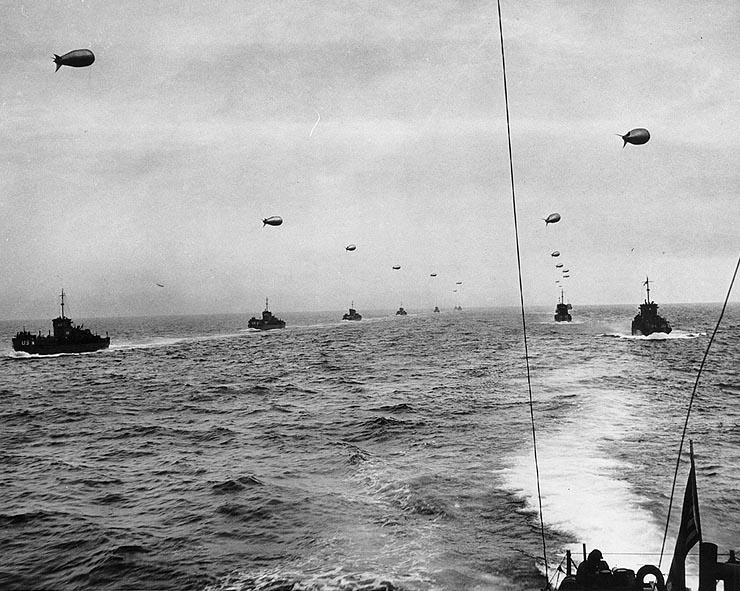
The
English Channel, a convoy of landing craft on their way to Normandy
6th June 1944.
ATLANTIC WALL
Alarmed by the raids on St Nazaire and Dieppe in 1942, Hitler had ordered the construction of fortifications all along the Atlantic coast, from Spain to Norway, to protect against an expected Allied invasion. He envisioned 15,000 emplacements manned by 300,000 troops, but shortages, particularly of concrete and manpower, meant that most of the strongpoints were never built. As it was expected to be the site of the invasion, the Pas de Calais was heavily defended. In the Normandy area, the best fortifications were concentrated at the port facilities at Cherbourg and Saint-Malo. Rommel was assigned to oversee the construction of further fortifications along the expected invasion front, which stretched from the Netherlands to Cherbourg, and was given command of the newly re-formed Army Group B, which included the 7th Army, the 15th Army, and the forces guarding the Netherlands. Reserves for this group included the 2nd, 21st, and 116th Panzer divisions.
Rommel believed that the Normandy coast could be a possible landing point for the invasion, so he ordered the construction of extensive defensive works along that shore. In addition to concrete gun emplacements at strategic points along the coast, he ordered wooden stakes, metal tripods, mines, and large anti-tank obstacles to be placed on the beaches to delay the approach of landing craft and impede the movement of tanks. Expecting the Allies to land at high tide so that the infantry would spend less time exposed on the beach, he ordered many of these obstacles to be placed at the high water mark. Tangles of barbed wire, booby traps, and the removal of ground cover made the approach hazardous for infantry. On Rommel's order, the number of mines along the coast was tripled. The Allied air offensive over Germany had crippled the Luftwaffe and established air supremacy over western Europe, so Rommel knew he could not expect effective air support. The Luftwaffe could muster only 815 aircraft over Normandy in comparison to the Allies' 9,543. Rommel arranged for booby-trapped stakes known as Rommelspargel (Rommel's asparagus) to be installed in meadows and fields to deter airborne landings.
German armaments minister Albert Speer notes in his 1969 autobiography that the German high command, concerned about the susceptibility of the airports and port facilities along the North Sea coast, held a conference on 6–8 June 1944 to discuss reinforcing defences in that area. Speer wrote:
In Germany itself we scarcely had any troop units at our disposal. If the airports at Hamburg and Bremen could be taken by parachute units and the ports of these cities seized by small forces, invasion armies debarking from ships would, I feared, meet no resistance and would be occupying Berlin and all of Germany within a few days.
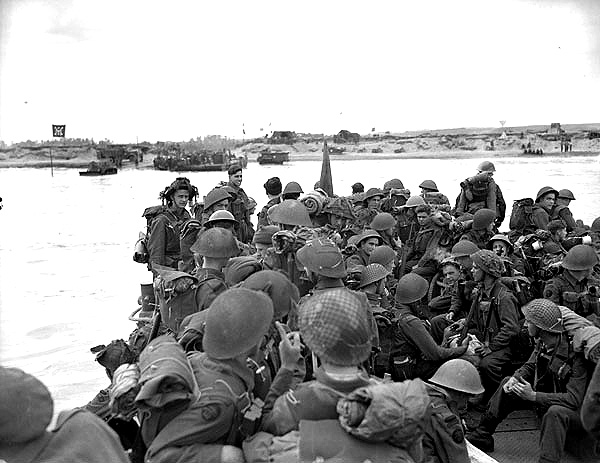
Canadian
forces landing at Juno Beach, 6th June 1944, invasion of
Normandy World War Two.
ARMOURED RESERVES
Rommel believed that Germany's best chance was to stop the invasion at the shore. He requested that the mobile reserves, especially tanks, be stationed as close to the coast as possible. Rundstedt, Geyr, and other senior commanders objected. They believed that the invasion could not be stopped on the beaches. Geyr argued for a conventional doctrine: keeping the Panzer formations concentrated in a central position around Paris and Rouen and deploying them only when the main Allied beachhead had been identified. He also noted that in the Italian Campaign, the armoured units stationed near the coast had been damaged by naval bombardment. Rommel's opinion was that because of Allied air supremacy, the large-scale movement of tanks would not be possible once the invasion was under way. Hitler made the final decision, which was to leave three Panzer divisions under Geyr's command and give Rommel operational control of three more as reserves. Hitler took personal control of four divisions as strategic reserves, not to be used without his direct orders.
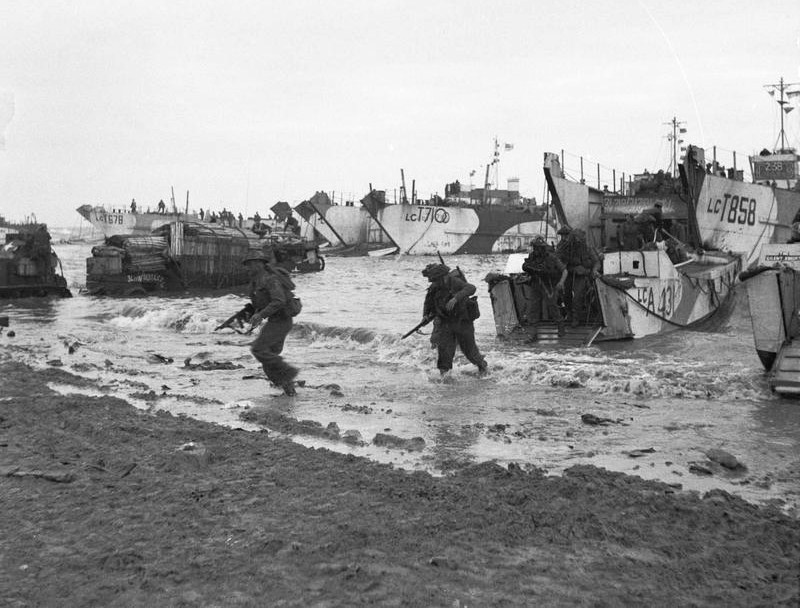
British
infantry amphibious landing craft at Gold Beach, 6th June
1944, WWII, Normandy.
NAVAL ACTIVITY
Naval operations for the invasion were described by historian Correlli Barnett as a "never surpassed masterpiece of planning". In overall command was British Admiral Sir Bertram Ramsay, who had served as Flag officer at Dover during the Dunkirk evacuation four years earlier. He had also been responsible for the naval planning of the invasion of North Africa in 1942, and one of the two fleets carrying troops for the invasion of Sicily the following year.
The invasion fleet, which was drawn from eight different navies, comprised 6,939 vessels: 1,213 warships, 4,126 landing craft of various types, 736 ancillary craft, and 864 merchant vessels. The majority of the fleet was supplied by the UK, which provided 892 warships and 3,261 landing craft. In total there were 195,700 naval personnel involved; of these 112,824 were from the Royal Navy with another 25,000 from the Merchant Navy; 52,889 were American; and 4,998 sailors from other allied countries. The invasion fleet was split into the Western Naval Task Force (under Admiral Alan G. Kirk) supporting the U.S. sectors and the Eastern Naval Task Force (under Admiral Sir Philip Vian) in the British and Canadian sectors. Available to the fleet were five battleships, 20 cruisers, 65 destroyers, and two monitors. German ships in the area on D-Day included three torpedo boats, 29 fast attack craft, 36 R boats, and 36 minesweepers and patrol boats. The Germans also had several
U-boats available, and all the approaches had been heavily mined.
NAVAL LOSSES
At 05:10, four German torpedo boats reached the Eastern Task Force and launched fifteen torpedoes, sinking the Norwegian destroyer HNoMS Svenner off Sword Beach but missing the British battleships HMS Warspite and Ramillies. After attacking, the German vessels turned away and fled east into a smoke screen that had been laid by the RAF to shield the fleet from the long-range battery at Le Havre. Allied losses to mines included the American destroyer USS Corry off Utah and submarine chaser USS PC-1261, a 173-foot patrol craft.
BOMBARDMENTS
Bombing of Normandy began around midnight with more than 2,200 British, Canadian, and U.S. bombers attacking targets along the coast and further inland. The coastal bombing attack was largely ineffective at Omaha, because low cloud cover made the assigned targets difficult to see. Concerned about inflicting casualties on their own troops, many bombers delayed their attacks too long and failed to hit the beach defences. The Germans had 570 aircraft stationed in Normandy and the Low Countries on D-Day, and another 964 in Germany.
Minesweepers began clearing channels for the invasion fleet shortly after midnight and finished just after dawn without encountering the enemy. The Western Task Force included the battleships Arkansas, Nevada, and Texas, plus eight cruisers, twenty-eight destroyers, and one monitor. The Eastern Task Force included the battleships Ramillies and Warspite and the monitor Roberts, twelve cruisers, and thirty-seven destroyers. Naval bombardment of areas behind the beach commenced at 05:45, while it was still dark, with the gunners switching to pre-assigned targets on the beach as soon as it was light enough to see, at 05:50. Since troops were scheduled to land at Utah and Omaha starting at 06:30 (an hour earlier than the British beaches), these areas received only about 40 minutes of naval bombardment before the assault troops began to land on the shore.
AIRBORNE OPERATIONS
The success of the amphibious landings depended on the establishment of a secure lodgement from which to expand the beachhead to allow the build-up of a well-supplied force capable of breaking out. The amphibious forces were especially vulnerable to strong enemy counter-attacks before the arrival of sufficient forces in the beachhead could be accomplished. To slow or eliminate the enemy's ability to organise and launch counter-attacks during this critical period, airborne operations were used to seize key objectives such as bridges, road crossings, and terrain features, particularly on the eastern and western flanks of the landing areas. The airborne landings some distance behind the beaches were also intended to ease the egress of the amphibious forces off the beaches, and in some cases to neutralise German coastal defence batteries and more quickly expand the area of the beachhead.
The U.S. 82nd and 101st Airborne Divisions were assigned to objectives west of Utah Beach, where they hoped to capture and control the few narrow causeways through terrain that had been intentionally flooded by the Germans. Reports from Allied intelligence in mid-May of the arrival of the German 91st Infantry Division meant the intended drop zones had to be shifted eastward and to the south. The British 6th Airborne Division, on the eastern flank, was assigned to capture intact the bridges over the Caen Canal and River Orne, destroy five bridges over the Dives 6 miles (9.7 km) to the east, and destroy the Merville Gun Battery overlooking Sword Beach. Free French paratroopers from the British SAS Brigade were assigned to objectives in Brittany from 5 June until August in Operations Dingson, Samwest, and Cooney.
BBC war correspondent Robert Barr described the scene as paratroopers prepared to board their aircraft:
Their faces were darkened with cocoa; sheathed knives were strapped to their ankles; tommy guns strapped to their waists; bandoliers and hand grenades, coils of rope, pick handles, spades, rubber dinghies hung around them, and a few personal oddments, like the lad who was taking a newspaper to read on the plane ... There was an easy familiar touch about the way they were getting ready, as though they had done it often before. Well, yes, they had kitted up and climbed aboard often just like this—twenty, thirty, forty times some of them, but it had never been quite like this before. This was the first combat jump for every one of them.
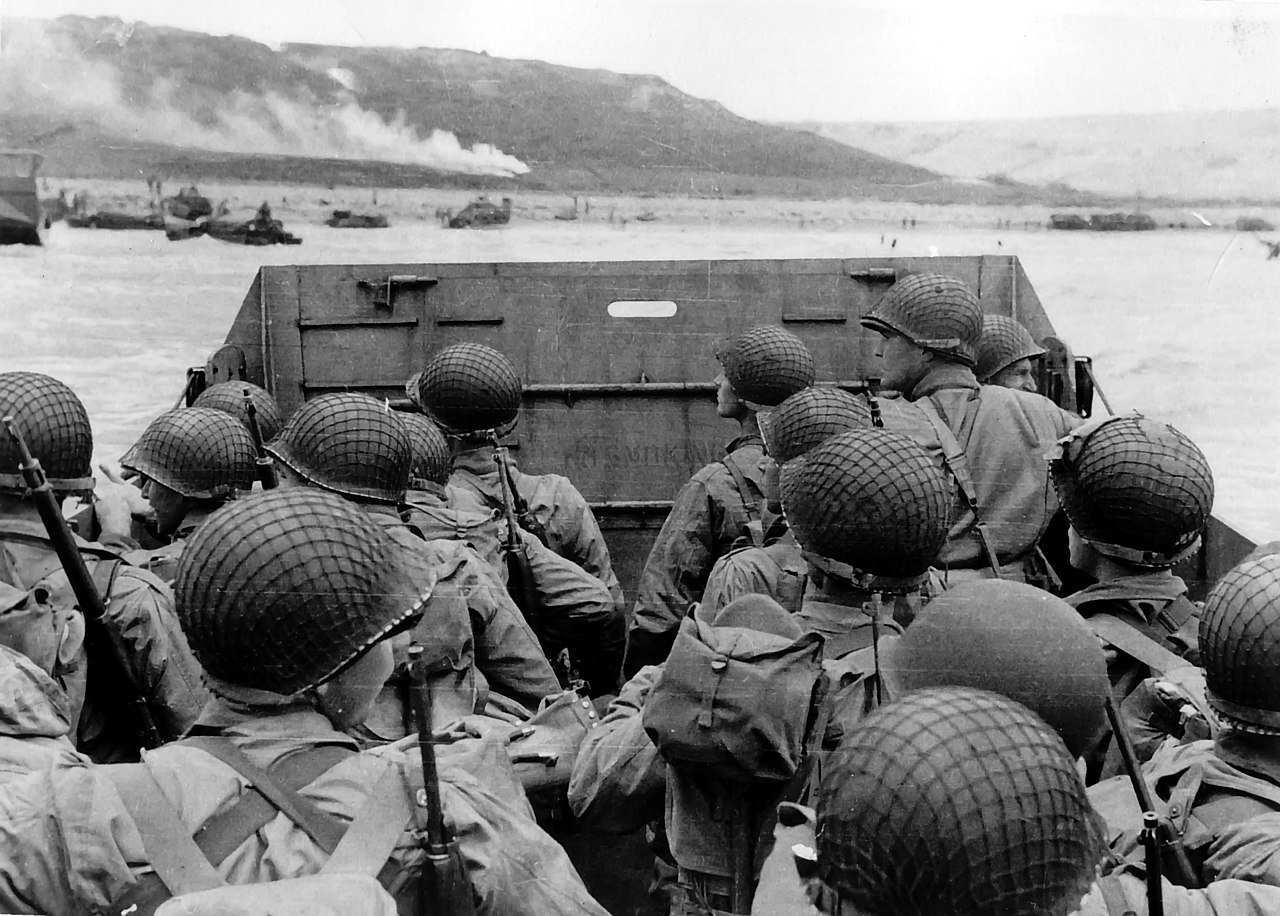
US
troops in an amphibious landing craft approaching Omaha Beach,
June 6th 1944.
UNITED STATES
The U.S. airborne landings began with the arrival of pathfinders at 00:15.
Navigation was difficult because of a bank of thick cloud, and as a result, only one of the five paratrooper drop zones was accurately marked with radar signals and Aldis lamps. Paratroopers of the 82nd and 101st Airborne Divisions, numbering over 13,000 men, were delivered by Douglas C-47 Skytrains of the IX Troop Carrier Command. To avoid flying over the invasion fleet, the planes arrived from the west over the Cotentin Peninsula and exited over Utah Beach.
Paratroops from 101st Airborne were dropped beginning around 01:30, tasked with controlling the causeways behind Utah Beach and destroying road and rail bridges over the Douve
River.
The C-47s could not fly in a tight formation because of thick cloud cover, and many paratroopers were dropped far from their intended landing zones. Many planes came in so low that they were under fire from both flak and machine-gun fire. Some paratroopers were killed on impact when their parachutes did not have time to open, and others drowned in the flooded fields. Gathering together into fighting units was made difficult by a shortage of radios and by the bocage terrain, with its hedgerows, stone walls, and marshes. Some units did not arrive at their targets until afternoon, by which time several of the causeways had already been cleared by members of the 4th Infantry Division moving up from the beach.
Troops of the 82nd Airborne began arriving around 02:30, with the primary objective of capturing two bridges over the River Merderet and destroying two bridges over the Douve. On the east side of the river, 75 per cent of the paratroopers landed in or near their drop zone, and within two hours they captured the important crossroads at Sainte-Mère-Église (the first town liberated in the invasion) and began working to protect the western flank. Because of the failure of the pathfinders to accurately mark their drop zone, the two regiments dropped on the west side of the Merderet were extremely scattered, with only four per cent landing in the target area. Many landed in nearby swamps, with much loss of life. Paratroopers consolidated into small groups, usually a combination of men of various ranks from different units, and attempted to concentrate on nearby objectives. They captured but failed to hold the Merderet River bridge at La Fière, and fighting for the crossing continued for several days.
Reinforcements arrived by glider around 04:00 (Mission Chicago and Mission Detroit), and 21:00 (Mission Keokuk and Mission Elmira), bringing additional troops and heavy equipment. Like the paratroopers, many landed far from their drop zones. Even those that landed on target experienced difficulty, with heavy cargo such as Jeeps shifting during landing, crashing through the wooden fuselage, and in some cases crushing personnel on board.
After 24 hours, only 2,500 men of the 101st and 2,000 of the 82nd Airborne were under the control of their divisions, approximately a third of the force dropped. This wide dispersal had the effect of confusing the Germans and fragmenting their response. The 7th Army received notification of the parachute drops at 01:20, but Rundstedt did not initially believe that a major invasion was underway. The destruction of radar stations along the Normandy coast in the week before the invasion meant that the Germans did not detect the approaching fleet until 02:00.
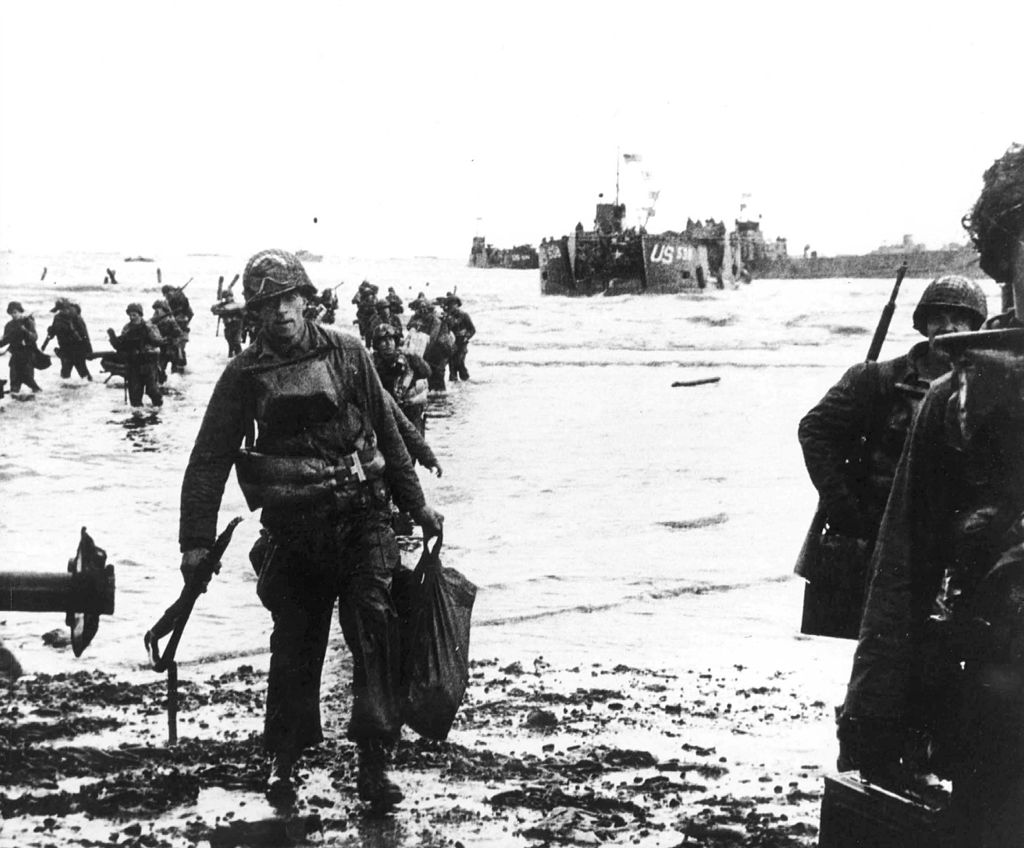
US
troops landing at Utah Beach, Normandy amphibious landing
craft 6th June 1944
BRITISH & CANADIAN
The first Allied action of D-Day was the capture of the Caen canal and Orne river bridges via a glider assault at 00:16 (since renamed Pegasus Bridge and Horsa Bridge). Both bridges were quickly captured intact, with light casualties by the Oxfordshire and Buckinghamshire Light Infantry Regiment. They were then reinforced by members of the 5th Parachute Brigade and the 7th (Light Infantry) Parachute Battalion. The five bridges over the Dives were destroyed with minimal difficulty by the 3rd Parachute Brigade. Meanwhile, the pathfinders tasked with setting up radar beacons and lights for further paratroopers (scheduled to begin arriving at 00:50 to clear the landing zone north of Ranville) were blown off course and had to set up the navigation aids too far east.
Many paratroopers, also blown too far east, landed far from their intended drop zones; some took hours or even days to be reunited with their units. Major General Richard Gale arrived in the third wave of gliders at 03:30, along with equipment, such as antitank guns and jeeps, and more troops to help secure the area from counter-attacks, which were initially staged only by troops in the immediate vicinity of the landings. At 02:00, the commander of the German 716th Infantry Division ordered Feuchtinger to move his 21st Panzer Division into position to counter-attack. However, as the division was part of the armoured reserve, Feuchtinger was obliged to seek clearance from OKW before he could commit his formation. Feuchtinger did not receive orders until nearly 09:00, but in the meantime on his own initiative he put together a battle group (including tanks) to fight the British forces east of the Orne.
Only 160 men out of the 600 members of the 9th Battalion tasked with eliminating the enemy battery at Merville arrived at the rendezvous point. Lieutenant Colonel Terence Otway, in charge of the operation, decided to proceed regardless, as the emplacement had to be destroyed by 06:00 to prevent it firing on the invasion fleet and the troops arriving on Sword Beach. In the Battle of Merville Gun Battery, Allied forces disabled the guns with plastic explosives at a cost of 75 casualties. The emplacement was found to contain 75 mm guns rather than the expected 150 mm heavy coastal artillery. Otway's remaining force withdrew with the assistance of a few members of the 1st Canadian Parachute Battalion.
With this action, the last of the D-Day goals of the British 6th Airborne Division was achieved. They were reinforced at 12:00 by commandos of the 1st Special Service Brigade, who landed on Sword Beach, and by the 6th Airlanding Brigade, who arrived in gliders at 21:00 in Operation Mallard.
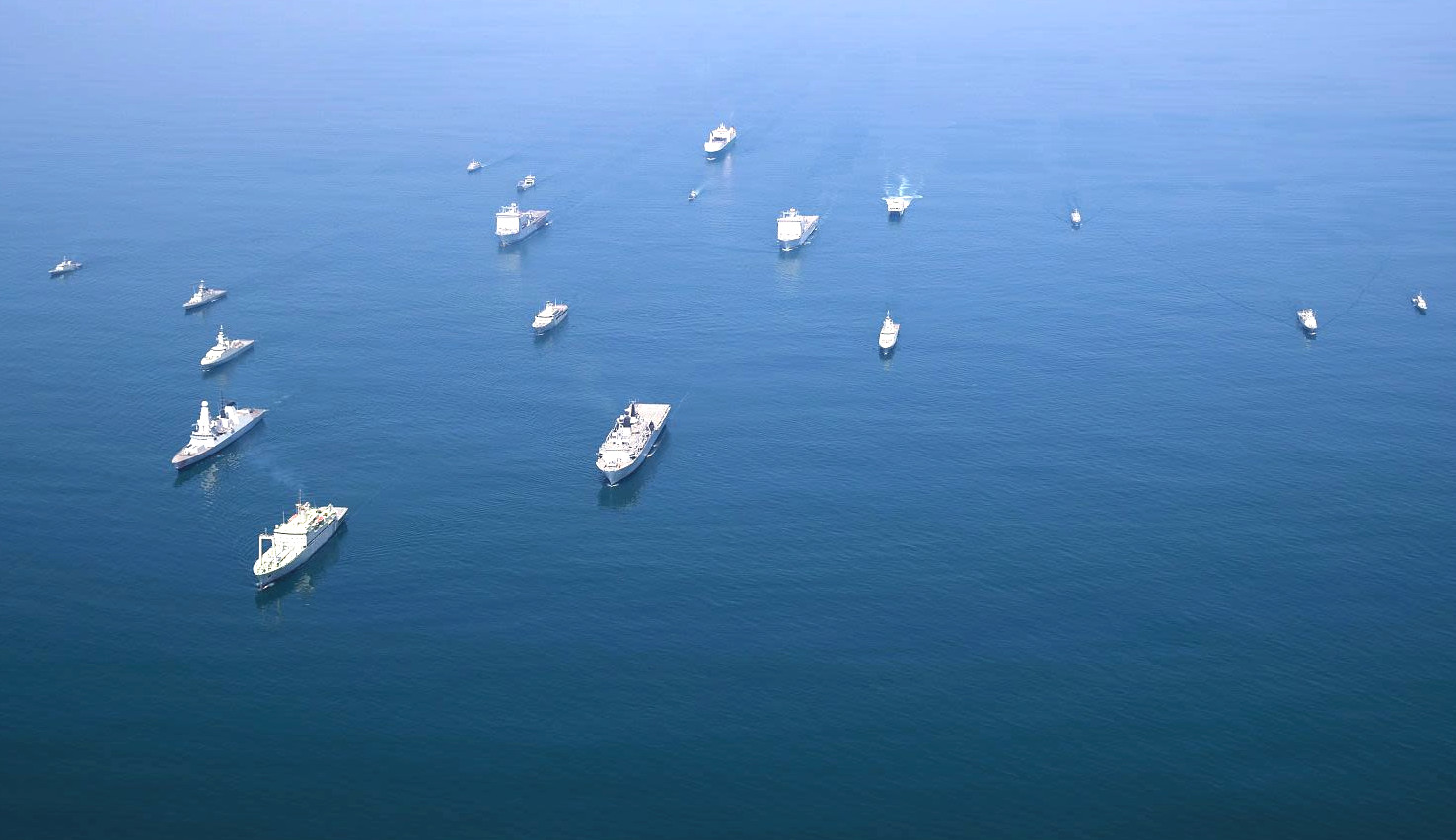
Review
of the British Royal Navy on the 75th Anniversary of the
Normandy D-Day Landings.
BEACH LANDINGS
Some of the landing craft had been modified to provide close support fire, and self-propelled amphibious Duplex-Drive tanks (DD tanks), specially designed for the Normandy landings, were to land shortly before the infantry to provide covering fire. However, few arrived in advance of the infantry, and many sank before reaching the shore, especially at Omaha.
UTAH BEACH
Utah Beach was in the area defended by two battalions of the 919th Grenadier Regiment. Members of the 8th Infantry Regiment of the 4th Infantry Division were the first to land, arriving at 06:30. Their landing craft were pushed to the south by strong currents, and they found themselves about 2,000 yards (1.8 km) from their intended landing zone. This site turned out to be better, as there was only one strongpoint nearby rather than two, and bombers of IX Bomber Command had bombed the defences from lower than their prescribed altitude, inflicting considerable damage. In addition, the strong currents had washed ashore many of the underwater obstacles. The assistant commander of the 4th Infantry Division, Brigadier General Theodore Roosevelt Jr., the first senior officer ashore, made the decision to "start the war from right here," and ordered further landings to be re-routed.
The initial assault battalions were quickly followed by 28 DD tanks and several waves of engineer and demolition teams to remove beach obstacles and clear the area directly behind the beach of obstacles and mines. Gaps were blown in the sea wall to allow quicker access for troops and tanks. Combat teams began to exit the beach at around 09:00, with some infantry wading through the flooded fields rather than travelling on the single road. They skirmished throughout the day with elements of the 919th Grenadier Regiment, who were armed with antitank guns and rifles. The main strongpoint in the area and another 1,300 yards (1.2 km) to the south were disabled by noon. The 4th Infantry Division did not meet all of their D-Day objectives at Utah Beach, partly because they had arrived too far to the south, but they landed 21,000 troops at the cost of only 197 casualties.
POINTE DU HOC BEACH
Pointe du Hoc, a prominent headland situated between Utah and Omaha, was assigned to two hundred men of the 2nd Ranger Battalion, commanded by Lieutenant Colonel James Rudder. Their task was to scale the 30 m (98 ft) cliffs with grappling hooks, ropes, and ladders to destroy the coastal gun battery located at the top. The cliffs were defended by the German 352nd Infantry Division and French collaborators firing from above. Allied destroyers Satterlee and Talybont provided fire support. After scaling the cliffs, the Rangers discovered that the guns had already been withdrawn. They located the weapons, unguarded but ready to use, in an orchard some 550 metres (600 yd) south of the point, and disabled them with explosives.
The Rangers fended off numerous counter-attacks from the German 914th Grenadier Regiment. The men were isolated, and some were captured. By dawn on 7 June, Rudder had only 90 men able to fight. Relief did not arrive until 8 June, when members of the 743rd Tank Battalion and others arrived. By then, Rudder's men had run out of ammunition and were using captured German weapons. Several men were killed as a result, because the German weapons made a distinctive noise, and the men were mistaken for the enemy. By the end of the battle, the Rangers casualties were 135 dead and wounded, while German casualties were 50 killed and 40 captured. An unknown number of French collaborators were executed.
OMAHA BEACH
Omaha, the most heavily defended beach, was assigned to the 1st Infantry Division and 29th Infantry Division. They faced the 352nd Infantry Division rather than the expected single regiment. Strong currents forced many landing craft east of their intended position or caused them to be delayed. For fear of hitting the landing craft, U.S. bombers delayed releasing their loads and as a result most of the beach obstacles at Omaha remained undamaged when the men came ashore. Many of the landing craft ran aground on sandbars, and the men had to wade 50–100m in water up to their necks while under fire to get to the beach. In spite of the rough seas, DD tanks of two companies of the 741st Tank Battalion were dropped 5,000 yards (4,600 m) from shore; however, 27 of the 32 flooded and sank, with the loss of 33 crew. Some tanks, disabled on the beach, continued to provide covering fire until their ammunition ran out or they were swamped by the rising tide.
Casualties were around 2,000, as the men were subjected to fire from the cliffs above. Problems clearing the beach of obstructions led to the beachmaster calling a halt to further landings of vehicles at 08:30. A group of destroyers arrived around this time to provide fire support so landings could resume. Exit from the beach was possible only via five heavily defended gullies, and by late morning barely 600 men had reached the higher ground. By noon, as the artillery fire took its toll and the Germans started to run out of ammunition, the Americans were able to clear some lanes on the beaches. They also started clearing the gullies of enemy defences so that vehicles could move off the beach. The tenuous beachhead was expanded over the following days, and the D-Day objectives for Omaha were accomplished by 9 June.
GOLD BEACH
The first landings on Gold Beach were set for 07:25 because of the differences in the tide between there and the U.S. beaches. High winds made conditions difficult for the landing craft, and the amphibious DD tanks were released close to shore or directly on the beach instead of further out as planned. Three of the four guns in a large emplacement at the Longues-sur-Mer battery were disabled by direct hits from the cruisers HMS Ajax and Argonaut at 06:20. The fourth gun resumed firing intermittently in the afternoon, and its garrison surrendered on 7 June. Aerial attacks had failed to hit the Le Hamel strongpoint, which had its embrasure facing east to provide enfilade fire along the beach and had a thick concrete wall on the seaward side Its 75 mm gun continued to do damage until 16:00, when an Armoured Vehicle Royal Engineers (AVRE) tank fired a large petard charge into its rear entrance. A second casemated emplacement at La Rivière containing an 88 mm gun was neutralised by a tank at 07:30.
Meanwhile, infantry began clearing the heavily fortified houses along the shore and advanced on targets further inland. The No. 47 (Royal Marine) Commando moved toward the small port at Port-en-Bessin and captured it the following day in the Battle of Port-en-Bessin. Company Sergeant Major Stanley Hollis received the only Victoria Cross awarded on D-Day for his actions while attacking two pillboxes at the Mont Fleury high point. On the western flank, the 1st Battalion, Royal Hampshire Regiment captured Arromanches (future site of Mulberry "B"), and contact was made on the eastern flank with the Canadian forces at Juno. Bayeux was not captured the first day because of stiff resistance from the 352nd Infantry Division. Allied casualties at Gold Beach are estimated at 1,000.
JUNO BEACH
The landing at Juno Beach was delayed because of choppy seas, and the men arrived ahead of their supporting armour, suffering many casualties while disembarking. Most of the offshore bombardment had missed the German defences. Several exits from the beach were created, but not without difficulty. At Mike Beach on the western flank, a large crater was filled using an abandoned AVRE tank and several rolls of fascine, which were then covered by a temporary bridge. The tank remained in place until 1972 when it was removed and restored by members of the Royal Engineers. The beach and nearby streets were clogged with traffic for most of the day, making it difficult to move inland.
Major German strongpoints with 75 mm guns, machine-gun nests, concrete fortifications, barbed wire, and mines were located at Courseulles-sur-Mer, St Aubin-sur-Mer, and Bernières-sur-Mer. The towns had to be cleared in house-to-house fighting. Soldiers on their way to Bény-sur-Mer, 3 miles (5 km) inland, discovered that the road was well covered by machine gun emplacements that had to be outflanked before the advance could proceed. Elements of the 9th Canadian Infantry Brigade advanced to within sight of the Carpiquet airfield late in the afternoon, but by this time their supporting armour was low on ammunition so the Canadians dug in for the night. The airfield was not captured until a month later as the area became the scene of fierce fighting. By nightfall, the contiguous Juno and Gold beachheads covered an area 12 miles (19 km) wide and 7 miles (10 km) deep. Casualties at Juno were 961 men.
SWORD BEACH
On Sword Beach, 21 of 25 DD tanks of the first wave were successful in getting safely ashore to provide cover for the infantry, who began disembarking at 07:30. The beach was heavily mined and peppered with obstacles, making the work of the beach clearing teams difficult and dangerous. In the windy conditions, the tide came in more quickly than expected, so manoeuvring the armour was difficult. The beach quickly became congested. Brigadier Simon Fraser, 15th Lord Lovat and his 1st Special Service Brigade arrived in the second wave, piped ashore by Private Bill Millin, Lovat's personal piper. Members of No. 4 Commando moved through Ouistreham to attack from the rear a German gun battery on the shore. A concrete observation and control tower at this emplacement had to be bypassed and was not captured until several days later. French forces under Commander Philippe Kieffer (the first French soldiers to arrive in Normandy) attacked and cleared the heavily fortified strongpoint at the casino at Riva Bella, with the aid of one of the DD tanks.
The 'Morris' strongpoint near Colleville-sur-Orne was captured after about an hour of fighting. The nearby 'Hillman' strongpoint, headquarters of the 736th Infantry Regiment, was a large complex defensive work that had come through the morning's bombardment essentially undamaged. It was not captured until 20:15. The 2nd Battalion, King's Shropshire Light Infantry began advancing to Caen on foot, coming within a few kilometres of the town, but had to withdraw due to lack of armour support. At 16:00, the 21st Panzer Division mounted a counter-attack between Sword and Juno and nearly succeeded in reaching the Channel. It met stiff resistance from the British 3rd Division and was soon recalled to assist in the area between Caen and Bayeux. Estimates of Allied casualties on Sword Beach are as high as 1,000.
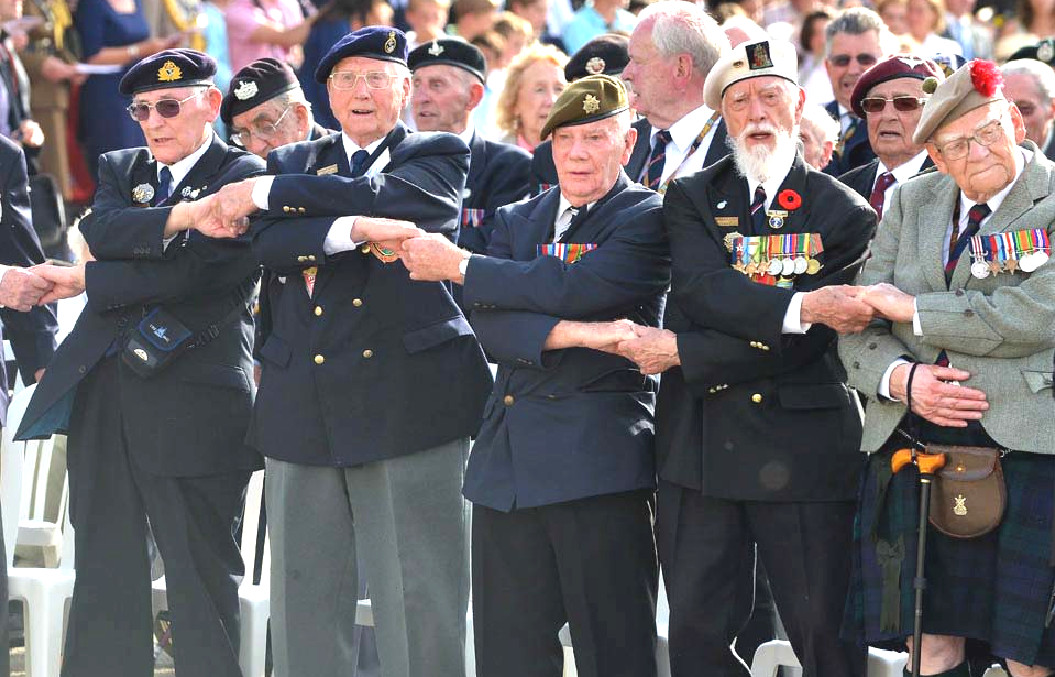
75TH
ANNIVERSARY - Commemorations on the seventy-fifth remembrance
of the Normandy landings. D-Day, June 6th 1944, veterans.
AFTERMATH
Though costly in terms of human life, the operations were necessary to regain a foothold on European soil, coming from the Atlantic. Even with some unbelievably tragic miscalculations, the operations managed to land enough of a force, to start the beginning of the end of the European element of World War Two.
Adolf
Hitler, would have known that, and so would his high command.
The Normandy landings were the largest seaborne invasion in history, with nearly 5,000 landing and assault craft, 289 escort vessels, and 277 minesweepers participating. Nearly 160,000 troops crossed the English Channel on D-Day, with 875,000 men disembarking by the end of June. Allied casualties on the first day were at least 10,000, with 4,414 confirmed dead. The Germans lost 1,000 men. The Allied invasion plans had called for the capture of Carentan, Saint-Lô, Caen, and Bayeux on the first day, with all the beaches (other than Utah) linked with a front line 10 to 16 kilometres (6 to 10 mi) from the beaches; none of these objectives were achieved. The five beachheads were not connected until 12 June, by which time the Allies held a front around 97 kilometres (60 mi) long and 24 kilometres (15 mi) deep. Caen, a major objective, was still in German hands at the end of D-Day and would not be completely captured until 21 July. The Germans had ordered French civilians other than those deemed essential to the war effort to leave potential combat zones in Normandy. Civilian casualties on D-Day and D+1 are estimated at 3,000.
The Allied victory in Normandy stemmed from several factors. German preparations along the Atlantic Wall were only partially finished; shortly before D-Day Rommel reported that construction was only 18 per cent complete in some areas as resources were diverted
elsewhere. The deceptions undertaken in Operation Fortitude were successful, leaving the Germans obliged to defend a huge stretch of coastline. The Allies achieved and maintained air supremacy, which meant that the Germans were unable to make observations of the preparations underway in Britain and were unable to interfere via bomber attacks. Infrastructure for transport in France was severely disrupted by Allied bombers and the French Resistance, making it difficult for the Germans to bring up reinforcements and supplies. Some of the opening bombardment was off-target or not concentrated enough to have any impact, but the specialised armour worked well except on Omaha, providing close artillery support for the troops as they disembarked onto the beaches. Indecisiveness and an overly complicated command structure on the part of the German high command were also factors in the Allied success.
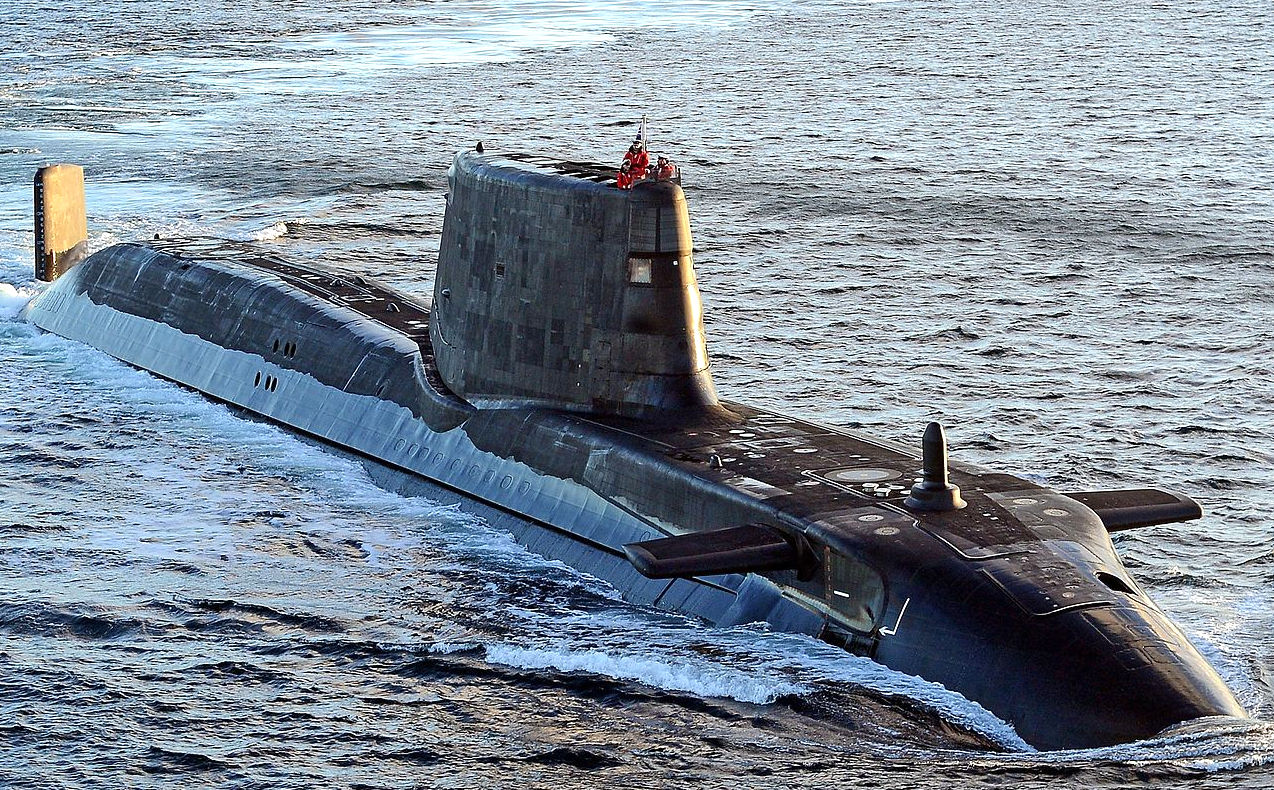
CHARACTERS
|
GOLD |
MEDIA |
MOVIES |
SCREENPLAY |
SUBMARINES
This
website is Copyright © Cleaner
Oceans Foundation Ltd., April 2023. Asserted as per the Berne
Convention.
In
this fictional story, the characters and events are the
product of the author's imagination.
|















